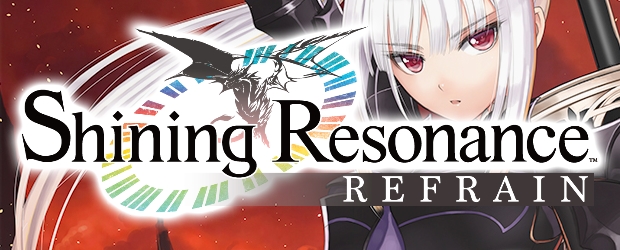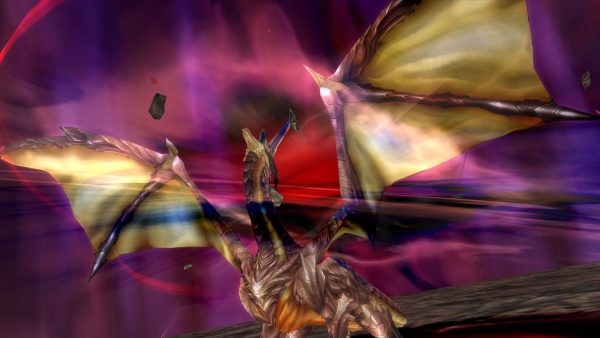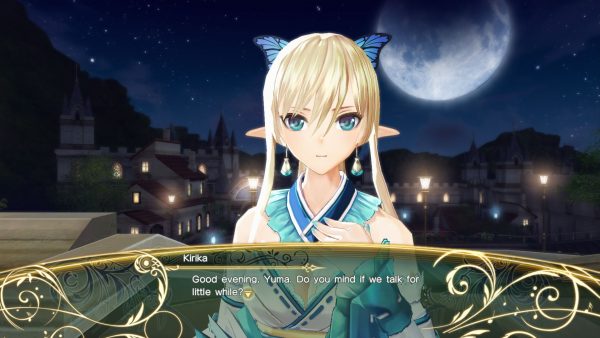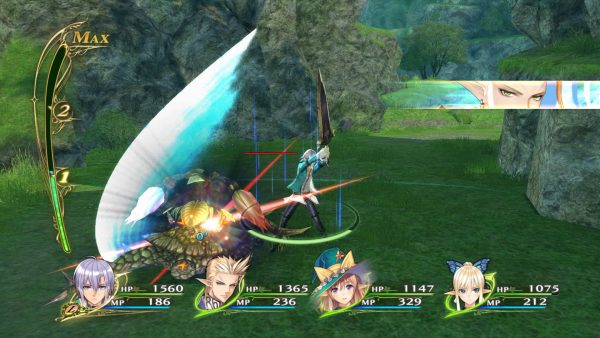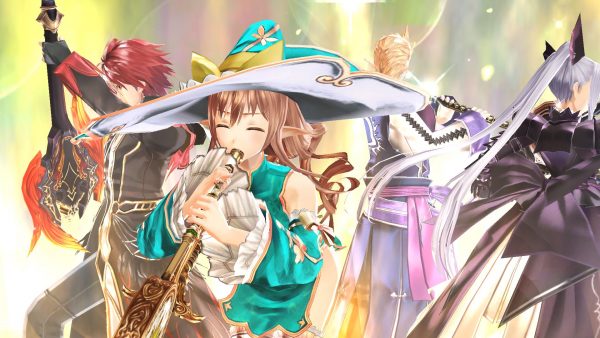Switch to: German
The Shining series has been absent from the western gaming scene for many years now. In that time the series has changed a lot from what fans may remember, ditching the old art-style and turn-based battle systems of the classic games. Shining Resonance: Refrain will likely be the first exposure to the Shining series for many people, which is a shame since this game only shows how far the series has fallen.
Shining Resonance was originally released in Japan for the PS3, telling the story of Yuma and the soul of a powerful dragon inside him. He fights against the Empire, who want to control his power along with the souls of other mythical dragons. Yuma teams up with the Dragoneers, warriors who can use weapon/instrument hybrids known as Armonics, learning more about the Empire and the world’s murky past.
The overall story in Shining Resonance really suffers from being too brief, rarely spending enough time developing the Empire or the overall conflict in the world. In fact world building as a whole is lacklustre, each area you explore coming off as bland due to a lack of backstory or landmarks. The land of Alfheim, where Shining Resonance’s story takes place, is nothing more than a series of environments that have no real connection to each other or any interesting lore behind them. In fact, you never even get to see the homeland of the Empire that is mentioned repeatedly during the story.
Your party is at least a little more fleshed out when it comes to backstory and character development, but it’s handled rather poorly thanks to how the game is structured. The main cast will sometimes have events while in town, where you will be able to learn more about them and their motivations. If your friendship level is high enough you can chat to a character while resting at the town’s inn, and sometimes go on dates with them for further event unlocks. The biggest issue with this is just how tedious it is to both trigger new events and increase your friendship level with a character.
Once you run out of events in town, you have to sleep at the inn to make new ones appear. After repeating this until there are no more events for that section of the story, you can then move onto grinding friendship. This requires you to take each character into battle until they’re available to chat with at night, and then you have to hope that their friendship level is high enough to take them out on a date in town. Now, this process is already boring when trying to become friends with one party member, but doing this for every playable character takes far too long. The modern Persona games show that you can build up your relationships with characters without making the player grind for hours at a time.
Shining Resonance: Refrain fares just as poorly when it comes to gameplay. You’re given the impression early on that the world of Alfheim is vast and full of areas to visit, but you’ll quickly find that this is not the case. There are only a small amount of different areas and you’ll have to visit them constantly due to the amount of backtracking required during the story. It doesn’t take too long to get around, but the constant repetition gets annoying fast. The world is rather lifeless too, each map being mostly linear and without any real incentive to explore. It doesn’t help that the game features no actual dungeons and only one town, said town also being small and boring to travel through.
Battles would have been a good way to break up the tedium of going though the same areas for the umpteenth time, but the battle system in Shining Resonance: Refrain has trouble staying engaging past the first few hours of the game. Each character has a light and heavy attack, plus four skills that can be set outside of battle. Basic combos consist of a few light attacks into a heavy attack or skill and that’s about it. Unlike other action RPGs like the Tales series, there are no interesting combos that can be pulled off. The lack of interesting skills and combos really stops battles from ever being fun, since what you can do at the start of the game is pretty much what you’ll be doing even 30 hours in.
Yuma does have his own gimmick, where he can expend MP to transform in the Shining Dragon, but this just further shows the battle system’s many flaws. The Shining Dragon’s attacks are powerful, can hit multiple enemies and can done in quick succession without pauses like normal combos. Yuma ends up being far more powerful than the rest of the cast thanks to this, giving you little reason to play anyone else if you want to defeat bosses quickly.
Speaking off bosses, they’re where the game’s pacing fails completely. The majority of Shining Resonance: Refrain is incredibly easy, allowing you to at least try to use other characters from time to time. However, bosses quickly start to outlevel your party greatly once you reach the last third of the game. If you don’t want to grind for experience, you’re pretty much forced to use Yuma to stand any sort of chance during boss fights. Further adding to these difficulty spikes is the dreadful character AI that sees your party running around like headless chickens and quickly wasting their MP. There’s a trait system that you can theoretically use to change how your party behaves, but it’s so obtuse that you’re better off pretending it doesn’t exist.
The move to current-gen consoles does at least bring a few benefits. The character models look great in 1080p, even if some of them don’t quite match their 2D artwork. Environments are less impressive, some wouldn’t look out of place in a PS2 game let alone a late PS3 one. Framerates are stable for the most part, though there is the occasional slowdown during certain battles that really should not be present.
The bigger change is the inclusion of all DLC that the original game received, plus the addition of a Refrain mode that can be selected when starting a new playthrough. This mode includes two new characters, both of which are important to the story, and a small amount of extra postgame content. The characters do help bump up the game’s meagre amount of party members, but the lack of any changes to the main story to accommodate these new characters is disappointing. One of said characters is also so weak in battle that there’s little real incentive to use them. Aside from some new costumes, most of which are for the female side of the party, Refrain doesn’t add a lot to an already flawed base game.
Conclusion
A lot of work was needed to justify a release of this game on modern consoles. Unlike Dragon’s Crown, which was already a great game before being remastered and didn’t need many additions, Shining Resonance was an incredibly mediocre RPG with many areas that could be improved upon. It’s a shame that Refrain does nothing to fix any of the glaring issues in the original release, leaving it as a game that would have been better off being forgotten.



